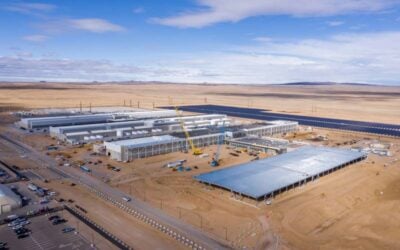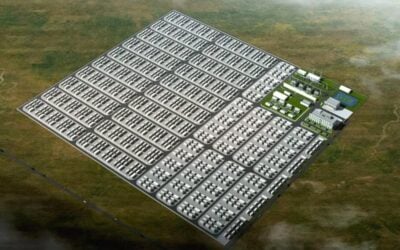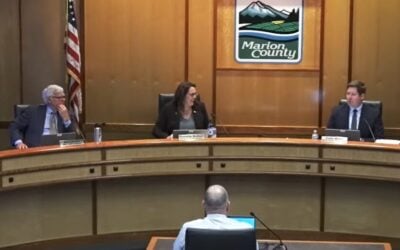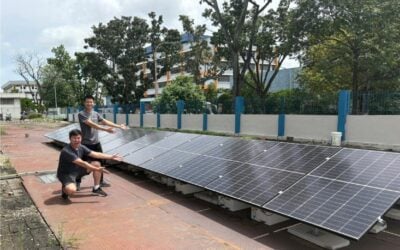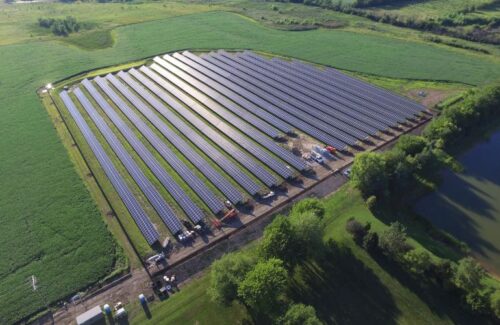
Summit Ridge Energy has commissioned two battery energy storage system (BESS) projects in New York City which will help reduce the grid’s reliance on diesel-fueled generation.
The developer, which builds, owns and operates commercial and community-scale solar PV and energy storage projects, announced the completion of its Arlington ESS and Littlefield ESS projects in the Brooklyn and Staten Island areas of New York City respectively.
Enjoy 12 months of exclusive analysis
- Regular insight and analysis of the industry’s biggest developments
- In-depth interviews with the industry’s leading figures
- Annual digital subscription to the PV Tech Power journal
- Discounts on Solar Media’s portfolio of events, in-person and virtual
Adding up to 30MWh, each system is 15MWh capacity, and are two out of four systems in Summit Ridge Energy’s first portfolio of energy storage projects in the state – as well as being the company’s first two storage projects period.
The remaining two projects, due to come online in the coming months, will bring the total capacity online to 58MWh. As revealed by Energy-Storage.news when Summit Ridge obtained US$15 million project financing for two of the projects in June last year, the systems will play into revenue opportunities including New York’s Value of Distributed Energy Resources (VDER) scheme.
In the VDER’s tariff structure, higher rates are paid for energy inputted to the grid when it needs it most, such as times of peak demand. The developer also received funding through the state’s incentive programme for so-called ‘retail’ storage facilities, which are stationary storage systems under 5MW each.
VDER, also described as the Value Stack by the scheme’s administrator, New York State Public Service Commission (PSC), is aimed at replacing net metering. Kilowatt-hours of energy fed into the grid from solar, storage and other distributed energy resource (DER) assets are paid an hourly aggregate rate based on their ability to reduce demand, provide capacity and relieve congestion on the grid, as well as for lowering emissions.
Other developers targeting this market include NineDot Energy, which recently raised US$25 million for community-scale BESS projects in New York.
Developer diversifying by geographies and technology
Summit Ridge executive VP of business development Jason Spreyer recently told sister site PV Tech that the storage projects are a milestone for a company which has expanded its reach geographically, branching out from three states (Maine, Illinois and Maryland) where it has to date been focused.
It also represents a technological diversification from the rooftop and ground mounted PV plants it has developed to date, Spreyer said, adding that the company is “increasingly looking at our development pipeline to include solar-plus-storage, especially in markets where incentives are starting to develop to incent the development of storage with solar”.
In June this year, the developer announced a joint venture (JV) to work on 100MW of solar PV projects in Virginia and 8MW of BESS in New York with the US subsidiary of Japanese utility Osaka Gas, continuing a working relationship between the two companies that has seen two previous JV agreements.
The Arlington and Littlefield BESS projects utilise battery storage hardware and software from QCELLS, the vertically integrated solar PV and energy management solutions company. They were financed, developed and constructed in partnership between the two companies.
As reported by Energy-Storage.news last year as QCELLS signed up to work on the two projects, plus one more in Summit Ridge’s New York portfolio, they were also something of a milestone for QCELLS, which had only entered the US standalone storage market a few months previously with a 190MW/380MWh project in Texas.
For New York the projects mark another small step towards achieving its targeted 6GW of energy storage by 2030 on the way to a 100% ‘clean’ electricity system by 2040. In the shorter term, Summit Ridge highlighted that the BESS assets will benefit the state by helping it reduce reliance on its fleet of polluting peaker plants, including some that run on diesel.
Peaker plants only kick into action during peak demand events, hence the name, but can be among the dirtiest and most expensive to maintain assets in a generation fleet. Programmes like VDER/Value Stack in New York, or the Clean Peak Standard in Massachusetts, seek to address this as a first priority of decarbonisation efforts for the grid.
Academic medical centre NYU Langone Health will purchase all of the bill credits from the two commissioned BESS projects.
Additional reporting by Jonathan Tourino Jacobo.
“As we pursue opportunities to reduce greenhouse gas emissions from our facilities, it is equally as important for us to support efforts to harden and decarbonise New York City’s energy grid for the benefit and resiliency of the communities we serve,” NYU Langone Health senior VP of facilities operations Paul Schwabacher said.

